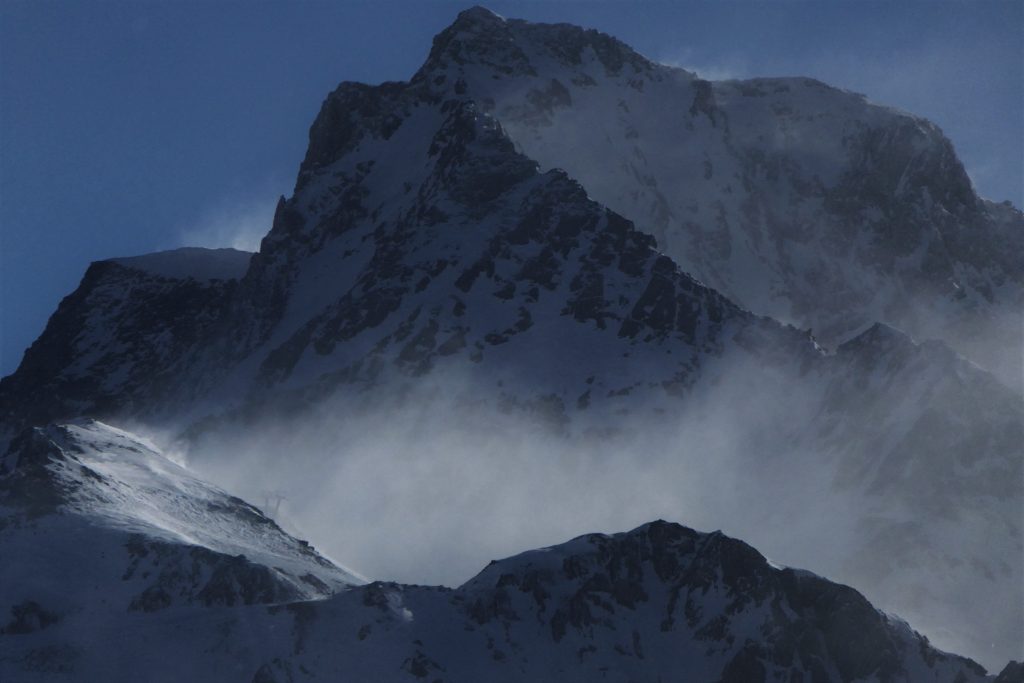Leanne and Phil just wanted to feel more sure and confident about their skiing, particularly for off piste purposes – and following the recent period where skiing opportunities were restricted. Our session began by me asking how they perceived “making a turn” and listening – then watching them skiing for a few turns. All of the issues I saw holding them back were classic repercussions of “mainstream” teaching – nothing else. The only way to get beyond those problems is through a fundamental shift in understanding. (Actually there is a more brutal ways to achieve this through a combination of competition and natural selection – but the attrition rate in that process is spectacularly high and completely unnecessary. )
Basic Dynamics (Accelerating Turns)
There’s absolutely no point in discussing “faults” in skiing and trying to eliminate them when the fundamentals need to be reworked entirely – so, accordingly we jumped straight in to dynamics. The menu at the top of this blog page has a button for “Dynamics” – the basic explanation is all there – also covering the exercises we used.
You’re body is basically an upside down pendulum and the movement of this pendulum (Centre of Mass) is lateral to the skis. You job is to “fall over” – the ski’s job is to respond to this and bring you back up (but this also incorporates a relationship with the geometry of the slope, gravity and muscular impulses).
Keeping things simple – just follow the skis with the upper body – as if riding a bicycle. Start the turn with a push downhill of your Centre of Mass from the uphill leg – even if it is on the uphill edge and even if it hasn’t quite finished the existing turn (early pressure).
Basic timing is “down/up” – like a motorbike going down into a turn etc. There can be a light “pole touch“at the transition between turns when the skier is up. Stability and feedback otherwise come from the “lifting” power of the ski itself – which is why it’s easier to ski at speed with the skis running forward.
Pivot (Braking Turns)
Yes there’s a button for this a the top! Now the skis are running essentially sideways (side slip) and always using an uphill edge (to slow down) – in both halves of the turn. This is also good training for dynamics because it uses controlled action of the Centre of Mass – supported by a pole plant. Movement of the Centre of Mass must always be towards the pole – until the turn has to be completed for the next one to take over. (Starting from the uphill edge of the uphill ski makes stemming outward of that ski impossible – so it’s a great way to eliminate such movements).
In the context of skiing “centrifugal force” does not exist. This means you should not brace against any falsely perceived turning force throwing you outwards or even displace anything (ski tails) outwards – everything has to work towards the turn centre so that the ski can function to deflect you in that direction – until the moment you are ready to give up on that turn for the next one. If working correctly this inward deflection will even resist gravity towards the turn completion. Then the skier decides how to exploit the forces to direct the trajectory.
ChiSkiing
Yep – there’s a button!
As soon as you engage the new turning leg/ski pull back that hip against the mass of the shoulders. With short turns this presents the illusion that you are “facing downhill”. Basically the pelvis faces the working ski while the shoulders remain facing ahead. This organises the core in a way that permits pressure on the soles of the feet to trigger reflex contraction of the lower abdomen (which can’t be activated voluntarily!)
Forward Pressure
Once the hips are working correctly this leads to a natural and appropriate hip angulation. ONLY when this is working can the boots be used (strong ankle – not flexed) to transmit significant pressure to the ski fronts to generate powerful grip and turning force. This is the same even in deep snow with appropriate skis. The only time it’s acceptable to come off the fronts of the boots is when the combined snow conditions and ski model cause the tips to dive too deep into the snow – but this is quite rare.

Conscious Skiing
Accurate understanding of the main principles in skiing helps to enable the ability to focus internally and to maintain that focus. When skiing becomes a moving meditation it connects us with nature. This is something incredibly absent in our consumer society and sadly almost non existent in skiing.
What we are actually looking for is “self organisation”. This happens spontaneously under certain conditions. (I use such a formula in my teaching deliberately but never discus it – worked it out 22 years ago after reading up on this subject). The writer Edward de Bono studied self organisation (Ilya Prigogine won the Nobel prize for chemistry upon proving it even happens in some basic chemical reactions) and realised that this is how we actually learn – we don’t “learn” linearly – it “happens to us”. He created the term “Lateral thinking” specifically for this.

